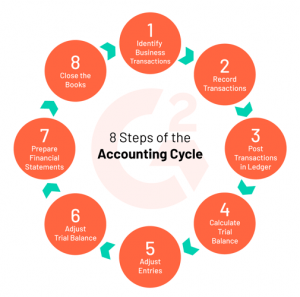Current Assets vs Noncurrent Assets, Simply Explained

You should consider whether you understand how this product works, and whether you can afford to take the high risk of losing your money. They are used by a company to produce goods and services and have a useful life of more than a year. The short-term debt of an organization may be purchases journal settled with cash and equivalents (that may be converted). The predicted payments from clients that will be collected within a year make up accounts receivable. Because it contains raw materials and finished commodities that can be sold rapidly, inventory is also a current asset.
- For example, the computers that Apple Inc. intends to sell are considered inventory (a short-term asset), whereas the computers Apple’s employees use for day-to-day operations are non-current assets.
- Intangible assets are items that represent value to a company within the context of its business operations.
- Depreciation, depletion, or amortization may be used to gradually reduce the amount of a noncurrent asset on the balance sheet.
- It could take several months or even over a year to sell a fixed asset for cash.
- These assets are recorded on a company’s balance sheet at acquisition cost.
They include things like land and heavy machinery and everything necessary for a business’s long-term requirements. The inverse is current assets, which typically use shorter-term funding sources like revolvers, operating lines of credit, and factoring, among others. Goodwill is for intangible assets such as company reputation and brand name. It also refers to customer base, employees, and customer relations.
Managerial Accounting
IG International Limited receives services from other members of the IG Group including IG Markets Limited. You use this characteristic in Consolidation within elimination of interunit profit/loss in transferred assets. Once you have viewed this piece of content, to ensure you can access the content most relevant to you, please confirm your territory. These materials were downloaded from PwC’s Viewpoint (viewpoint.pwc.com) under license. Our mission is to empower readers with the most factual and reliable financial information possible to help them make informed decisions for their individual needs. Our goal is to deliver the most understandable and comprehensive explanations of financial topics using simple writing complemented by helpful graphics and animation videos.

Typically, payments on these types of loans begin shortly after the funds are borrowed. Student loans are a special type of consumer borrowing that has a different structure for repayment of the debt. If you are not familiar with the special repayment arrangement for student loans, do a brief internet search to find out when student loan payments are expected to begin. IG International Limited is part of the IG Group and its ultimate parent company is IG Group Holdings Plc.
What are some examples of noncurrent assets?
So if the cost of the asset is $500 with $100 of accumulated depreciation, the carrying amount or net book value of the asset would be $400 ($ ). The characteristic noncurrent asset is part of a compound with the independent characteristic Asset Main Number (0BCS_MASTMN) and therefore represents a subasset or asset subnumber. Very simply, solvency is a company’s ability to meet long-term debts and other financial obligations.

If the asset will be used or consumed in one year or less, we classify the asset as a current asset. If the asset will be used or consumed over more than one year, we classify the asset as a noncurrent asset. Noncurrent assets are important to a company because they describe the foundation and long-term stability of a business. They are also used to generate revenue and are a source of financing when the company requires to raise capital. The decision on which method should be used to compute noncurrent assets (cost model vs. revaluation model) should be at the discretion of the management and should be based on its preference. Below is an imaginary part of Emirates’ balance statement from its 10-K 2021 annual filing that shows where current and noncurrent assets are located.
Current Assets vs. Noncurrent Assets: An Overview
The bottom line is that the distinction between current and noncurrent assets is a distinction of timing. Knowing how many assets a company has and when those assets will be used or consumed gives the most accurate view of a company’s finances in the present, as well as a picture of the company’s financial future. These are Emirates’ long-term assets, including its hangars and warehouses, which are classified as property, plant, and equipment (PP&E).

Cash and equivalents (that may be converted) may be used to pay a company’s short-term debt. Accounts receivable consist of the expected payments from customers to be collected within one year. Inventory is also a current asset because it includes raw materials and finished goods that can be sold relatively quickly.
Pete Rathburn is a copy editor and fact-checker with expertise in economics and personal finance and over twenty years of experience in the classroom. Textbook content produced by OpenStax is licensed under a Creative Commons Attribution-NonCommercial-ShareAlike License . This concept is that no matter which of the entity options that you choose, the accounting process for all of them will be predicated on the accounting equation. When money is borrowed by an individual or family from a bank or other lending institution, the loan is considered a personal or consumer loan.
Yes, buildings are typically considered noncurrent assets because they provide economic benefits over a long-term period. Fixed assets are usually reported on the balance sheet as property, plant and equipment. The resources a firm needs to operate and expand are assets in financial accounting. Current and noncurrent assets are the two types of assets that are listed on a firm’s balance sheet and add up to the total assets of the company.
Tangible Assets
Intangible non-current assets are things that your business holds that do not have a physical form. They provide value to your business, but it can be difficult to convert them into cash. Current assets are items that your business uses in its day-to-day operations and owns for less than 12 months. You use current assets to generate cash flow for the business and you can liquidate them quickly to fund your ongoing operations and cover your expenses. The risks of loss from investing in CFDs can be substantial and the value of your investments may fluctuate. CFDs are complex instruments and come with a high risk of losing money rapidly due to leverage.
Are you a business owner in need of resources to grow your business? We also offer reviews and comparisons of different products, including point-of-sale (POS), merchant services, and accounting software solutions. Another way of looking at financial health and a company’s solvency is through the idea of working capital. Liquidity refers to the speed or ease of turning an asset into cash. Someone on our team will connect you with a financial professional in our network holding the correct designation and expertise. The articles and research support materials available on this site are educational and are not intended to be investment or tax advice.
Content Details
If a company has a high proportion of noncurrent to current assets, this can be an indicator of poor liquidity, since a large amount of cash may be needed to support ongoing investments in noncash assets. Prepaid assets may be classified as noncurrent assets if the future benefit is not to be received within one year. For example, if rent is prepaid for the next 24 months, 12 months is considered a current asset as the benefit will be used within the year. The other 12 months are considered noncurrent as the benefit will not be received until the following year. Non-current assets, also known as fixed assets, are assets that your business holds for longer than 12 months and uses as a source of long-term revenue generation. They usually have a high value, benefit the business for long periods, and cannot quickly be turned into cash.
Fixed assets include property, plant, and equipment, such as a factory. Various assets, including fixed assets, intellectual property, and other intangibles, are all considered noncurrent assets. A fixed asset is typically a physical item that is difficult to quickly convert to cash. Non-physical assets like patents and copyrights are examples of intangible assets. Because they add value to a business but cannot be easily converted to cash within a year, they are regarded as noncurrent assets. Other noncurrent assets include the cash surrender value of life insurance.
At the end of the business year in 2021, current assets were $29.6 billion. The cost of the asset is allocated over the number of years that the asset is in use. This is instead of allocating the cost to the accounting year in which it was acquired. A noncurrent asset is an asset that is not expected to be consumed within one year.
Freehold Royalties Announces Second Quarter Results – GlobeNewswire
Freehold Royalties Announces Second Quarter Results.
Posted: Mon, 31 Jul 2023 11:00:49 GMT [source]
Noncurrent assets are long-term investments and are not easily converted into cash. Current assets are short-term investments that a company expects to convert into cash within a year. Consider noncurrent assets to be long-term since they have a useful life of more than 365 days, in contrast to current assets, which are short-term because they may be required for a company’s liquidity increase. It’s vital that business owners understand what a non-current asset is. Being able to distinguish between current and noncurrent assets lends a deeper understanding of the inner workings of your business. A tangible asset refers to any asset with a physical form or a property that is owned by a company and is a part of its main core operations.
